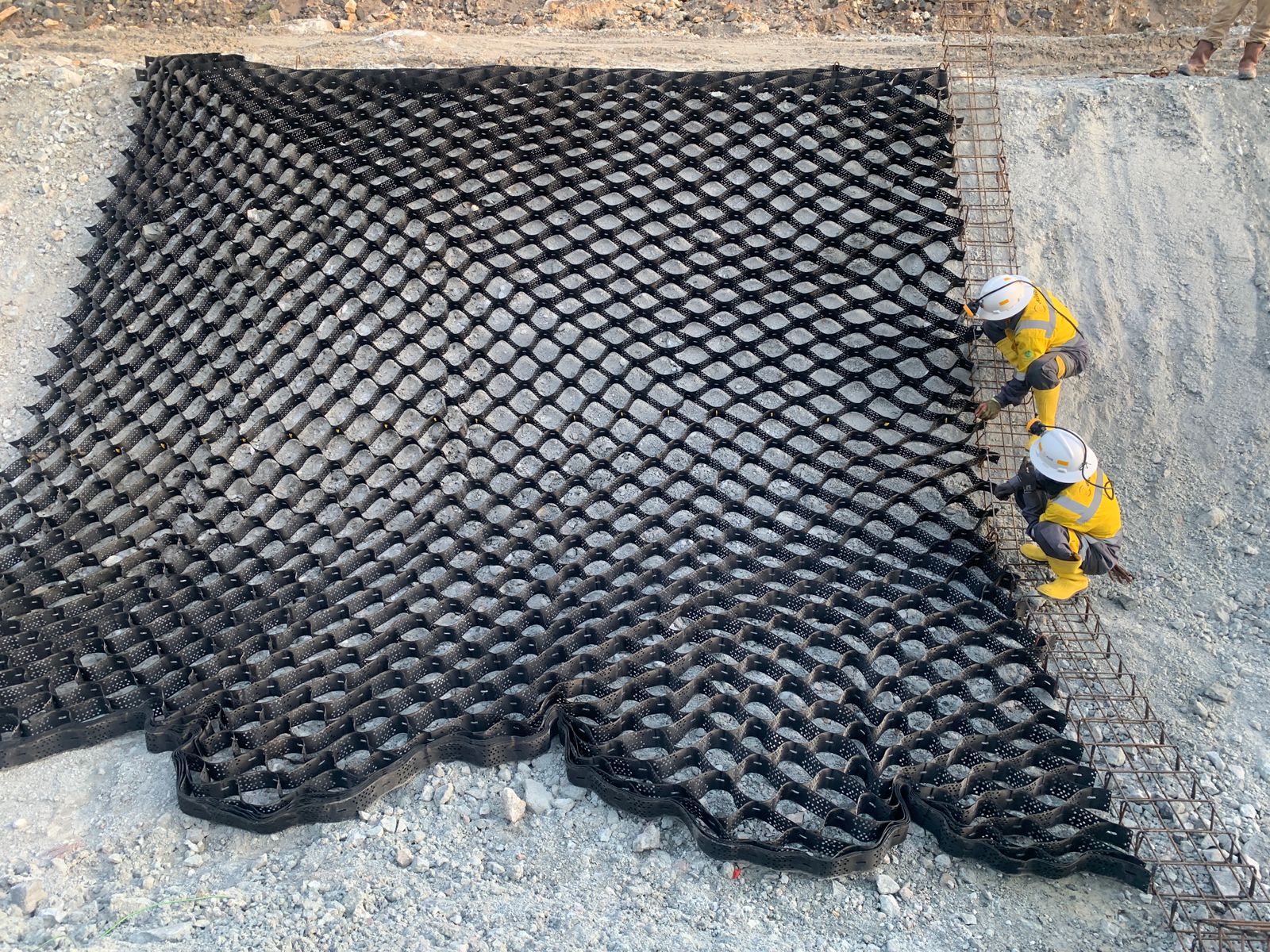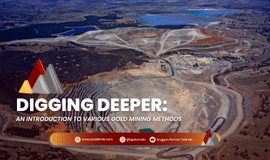Evolution of Building Materials in the Era of Geotechnical Engineering
The world of construction and mining has evolved from merely building structures to mastering the art of maintaining the earth’s stability itself.
Water pressure, heavy equipment vibration, and micro ground movements can pose serious threats if the support system is not properly designed.
This is where modern building materials play a critical role, not just concrete and steel, but also a combination of mesh/geogrid, rock bolts, and shotcrete, three key elements that have become the backbone of slope, tunnel, and mine foundation stability.
Core Components of Modern Support Systems
- Mesh / Geogrid — Surface Reinforcement Layer
Mesh is a steel net installed on excavation walls or slopes to hold small rock fragments and prevent them from falling.

Geogrid, on the other hand, is a polymer-based grid material used to reinforce soil, typically applied in embankments, retaining walls, or areas prone to lateral deformation.

In the context of open-pit mining and infrastructure construction, mesh/geogrid plays a vital role in:
- Controlling micro-failures (raveling) on rock walls,
- Distributing shear loads across soil layers,
- Stabilizing slopes under wet or eroded conditions.
2. Rock Bolt — Internal Anchor That “Locks” the Rock Mass

If mesh protects from the outside, rock bolts work from within.
A rock bolt is an anchoring system installed into rock formations to improve their stiffness and strength. The bolts are placed by drilling holes and embedding them with cement grout or resin.
In a geotechnical system, rock bolts function to:
- Bind rock layers to work as a single mass,
- Reduce deformation and the risk of slope failure,
- Resist stresses caused by the self-weight of the rock and heavy equipment operations.
3. Shotcrete — Rapid and Adaptive Protective Layer

Shotcrete is concrete or mortar sprayed directly onto surfaces using wet-mix or dry-mix methods.
Originally developed for underground mining, the technology is now widely applied in tunnels, bridges, and slope structures.
Advantages of shotcrete over conventional concrete include:
- Can be applied directly onto uneven surfaces,
- Sets quickly while coating excavation walls,
- Resists water pressure and rock deformation effectively.
System Integration: When Materials Work as One
These three materials are designed not to compete, but to collaborate.
The combined support system is widely used in major projects, from Freeport Grasberg and Jakarta MRT tunnels, to hydropower slopes and coal mines in Kalimantan.
The typical sequence of application is as follows:
- Mesh/Geogrid is installed first to capture loose particles.
- Rock bolts are anchored to strengthen the rock mass from within.
- Shotcrete is sprayed as the final coating to lock the entire system together.
The result is a composite support system that is efficient, resilient, and capable of resisting deformation from multiple directions and extreme conditions.
Implementation Challenges in the Field
Despite their effectiveness, the performance of these systems heavily depends on design precision and quality control.
Grouting and Anchoring Quality
- Incomplete grouting of rock bolts can reduce bonding strength by up to 30%.
Curing and Shotcrete Thickness
- Thickness should never be below design standards — even a 10 mm reduction can decrease flexural strength by 15%.
Geological Conditions
- Fault zones or high groundwater levels can alter stress directions, requiring real-time adjustments based on site geotechnical data.
Material Selection for Mesh/Geogrid
- In highly corrosive mining environments, galvanizing or alkali-resistant polymer coatings are necessary to ensure durability.
Conclusion
Mesh, rock bolts, and shotcrete are not just “building materials.” They form an intelligent engineering system that addresses today’s geotechnical challenges ensuring stability, efficiency, and safety.
With proper design and application, these materials can:
✅ Reduce construction time
✅ Lower maintenance costs
✅ Enhance worker safety
✅ Support long-term sustainable operations
References:
- https://geomatejournal.com/geomate/article/download/1632/1528/2155
- https://www.researchgate.net/publication/240362809_Interaction_of_shotcrete_with_rock_and_rock_bolts-A_numerical_study
- https://static.rocscience.cloud/assets/resources/learning/hoek/Practical-Rock-Engineering-Chapter-15-Shotcrete-Support-Remediated.pdf











